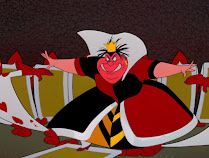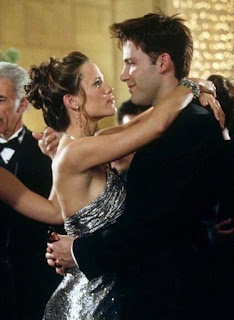When we
dream, it’s almost like watching a movie that’s only meant for one person to
see. There’s just no limit or telling what kind of bizarre and creative imagery
can come to one’s subconscious mind when they fall asleep. This gives
filmmakers the chance to be very crafty when creating dream sequences in
movies, they can be scary, artistic, beautiful or just plain odd and here are
my personal top ten favorite movie dream sequences. Just a heads up,
I’m not including movies that take place in a dream world, so don’t expect “Inception”,
“Little Nemo” or any of the “Nightmare on Elmstreet” movies to be
on this list. Also, I’m not including day dreams like the ones seen in “A
Christmas Story” or “The Fast Times at Ridgemont High”, the
character actually has to fall asleep in order to count as a dream. With all
that said, here’s the list.
#10 Dream Sequence from Alfred Hitchcock’s “Vertigo”
Alfred
Hitchcock was a visionary mastermind like no other, and who better to
artistically show the mental deterioration of someones obsessed mind. After
our lead character named Scottie looses the love of his life in an accident, he
slowly loses his sanity and begins slipping in and out of his own consciousness,
this results in a trippy dream with flashy effects, stylish direction,
impressive animation and a hypnotic feel that literally puts you into a trans
while watching.
#9 Dream
Sequence from “The Simpsons movie”
I’m
convinced that “The Simpsons Movie”
represents the best that the Simpsons ever had to offer, including a hilarious
and all around insane dream scene. After Homer Simpson gets lost in the mountains,
he stubbles across a voodoo lady who gives him a spicy beverage that sends him
into this trippy hallucination where he's trapped within a maze of his own mind. With an artistic design directly inspired by Salvador Dali’s paintings, specifically “The
Melting Stop Watch”, lots of funny jokes and an unbelievably cool Spider-Pig
theme composed by Hans Zimmer, this dream sequence has it all.
#8 Dream Sequence from “The
Big Lebowski”
Now
here’s a dream sequence so awesome that it even gets its own title sequence.
It’s almost like a serial music video from the 1980’s, with a rocking
soundtrack, chicks in mini-skirts, elaborates sets, wild costumes and plenty of
hummer. This is one up beat dream sequence that no amount of alcohol will ever
make you forget.
#7 Dream Sequence from “An American Werewolf in London”
You’d think
that a dream sequence in a horror film would go straight for scary imagery, but
this flick decides to mix its horror elements with wildly over the top events
that only your subconscious mind can dream up. This includes running in the
woods with a pack of wolves, visits from the ghost of your decayed best friend,
cameo’s from the Muppets and Werewolves dressed up like Nazi’s that invade a
house, now that’s crazy. These dream scenes are darkly comedic, but shockingly
frightening and a perfect fit for the list.
#6 Dream Sequence from “All Dogs go to Heaven”
This is a
very controversial children’s movie, featuring themes and subjects that are very
adult for kids. It also makes great use of one of the most frightening
nightmare sequences ever seen on film. As our hero named Charlie cheats his own
death, he’s told hell never be able to inter heaven, leading to one inevitable
conclusion, he’s going to hell. There’s no subtlety in what kind of demonic
imagery appears in this dream, fiery brimstone, violent monsters, scary faces,
lakes of lava, it’s all really intense but awesome. It’s a chilling nightmare
that’s shore to give your children nightmares.
#5 Dream
Sequence from “Peewee's Big
Adventure”
Count on a visionary
artist like Tim Burton to deliver a dream as wild and creepy as this. The
bumbling Peewee Herman is out on a journey to find his stolen bike, in his sub counties
he fears he’ll never see it again, leading into a crazy dream involving devils
lowering his bike into a boiling caldron, a giant clay-motion T-Rex and a bunch
of scary clowns dressed up like plastic surgeons. The overall set design of
this dream is brilliant, with the background being pitch black and everything
in the foreground being bright and colorful.
#4 Dream Sequence from “Brazil”
What’s
cooler then a dream sequence in an artsy movie, how about several in one film.
This is the story of a man who wants to be set free from the controlling
government he’s stuck in, so during his down time he dreams about being free.
Flying through the sky and rescuing the love of his life, however the all
controlling society is dogging at his heals and interring his subconscious as
well. Not only does this lead to some creative imagery, and incredible visual
effects, there also very captivating and full of atmosphere. It actually gets to the point in which you begin
to feel like your dreaming yourself.
There just fascinating to watch, and you get plenty of elaborate dreams
in this film.
#3 Dream Sequence from “The Prince of Egypt”
This is
perhaps one of the most artistically brilliant dreams I’ve ever seen. After our
lead hero named Moses dynes the truth of his heritage, he has a nightmare that
shows in full detail, his real origin and a secret that had been kept from him his
whole life. What’s truly brilliant about this scene is how it’s displayed
through hieroglyphics and Egyptian style paintings. It’s all very artistic but it also has a strong atmosphere, chilling musical score, dramatic elements and
some incredible visual effects, it truly is one of my favorite dream sequences
I’ve seen in a motion picture.
#2 Dream Sequence from Alfred Hitchcock’s “Spellbound”
With Alfred Hitchcock’s film-making talents and an art deco design by Salvador Dali, the 1945 motion
picture “Spellbound” delivers one of
the most elaborate and abstract dream sequences ever put into film. With lots of tilted angles, creepy eyes that are floating all around, a faceless man holding
a bent wheel and scenery that’s strait out of any classic Salvador Dali
painting, this is one twisted dream that’s wilder then anything Tim Burton
could ever dream up.
Before I reveal my number one pick, here are my Honorable Mentions:
Dream Sequence's from“Cat People” (1942)
Dream Sequence's from “The Fly” (1986)
Dream Sequence's from“Cat People” (1942)
Dream Sequence's from “The Fly” (1986)
Dream Sequence's from “American Beauty” (1999)
Dream Sequence's from “The Bear” (1988)
Dream Sequence's from “Rosemary's Baby” (1968)
Deam Sequence's from “Joseph King of Dreams” (2000)
#1 Dream Sequence from “Terminator 2: Judgment Day”
This is perhaps the most disturbing dream sequence ever seen in a movie, it left such an impact on me that it had to make the number one spot. For
those of you not familiar with the movie, Sara Connor is one of our lead
characters and she’s learned that in a couple years, everything will fall victim
to mass nuclear bombing. Having such knowledge has kept her in a state of fear
and paranoia, she can’t even sleep without having a horrific nightmare about
the upcoming tragedy. This whole scene is such a real and terrifying
perspective of a civilization being nuked, with intense images, an ominous
overtone and a glimpse of the innocents that get got in the blast. It leaves me
with chills every time and it’s the most unforgettable dream sequence I’ve ever
seen in a movie.
Sweet dreams everyone!










































































